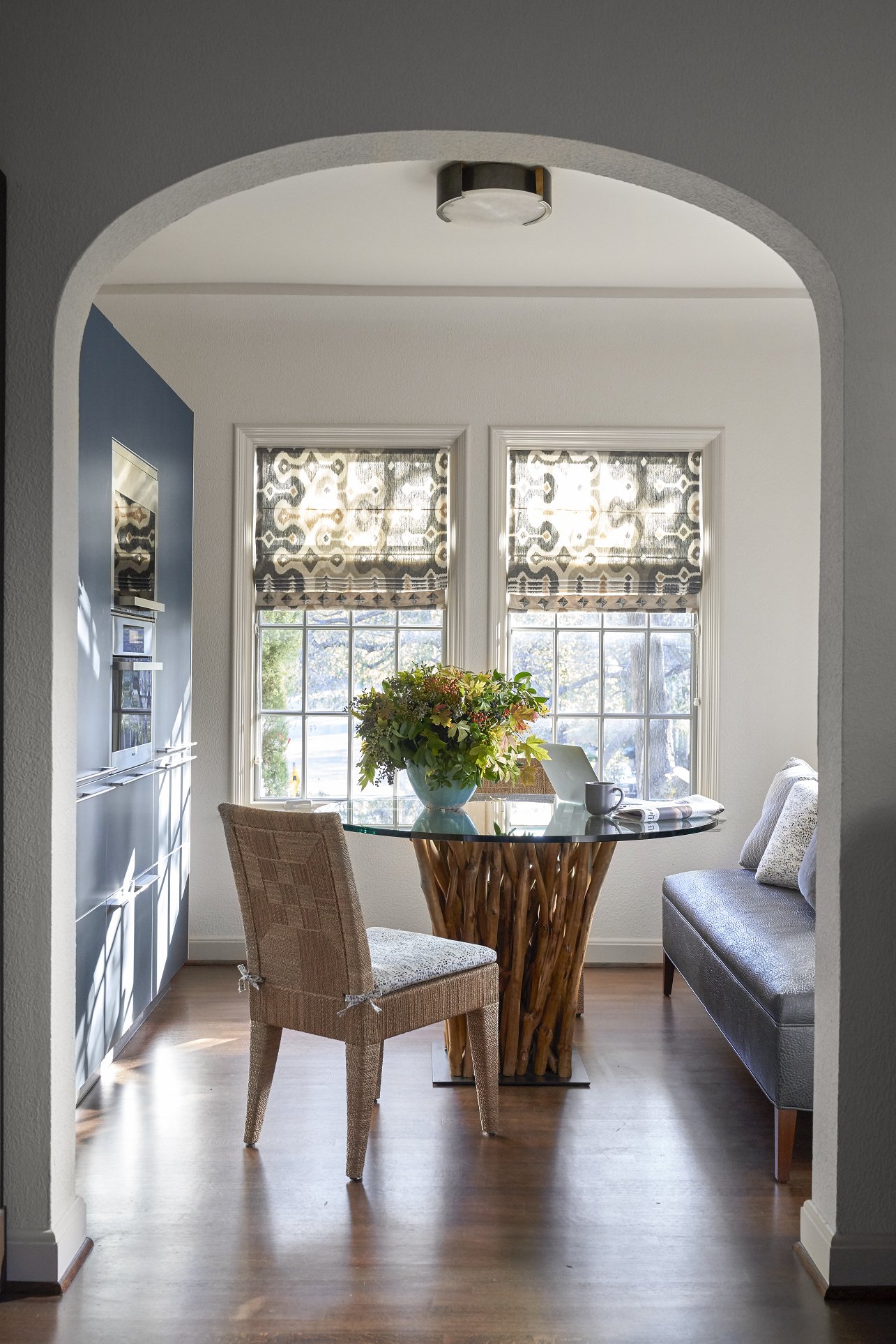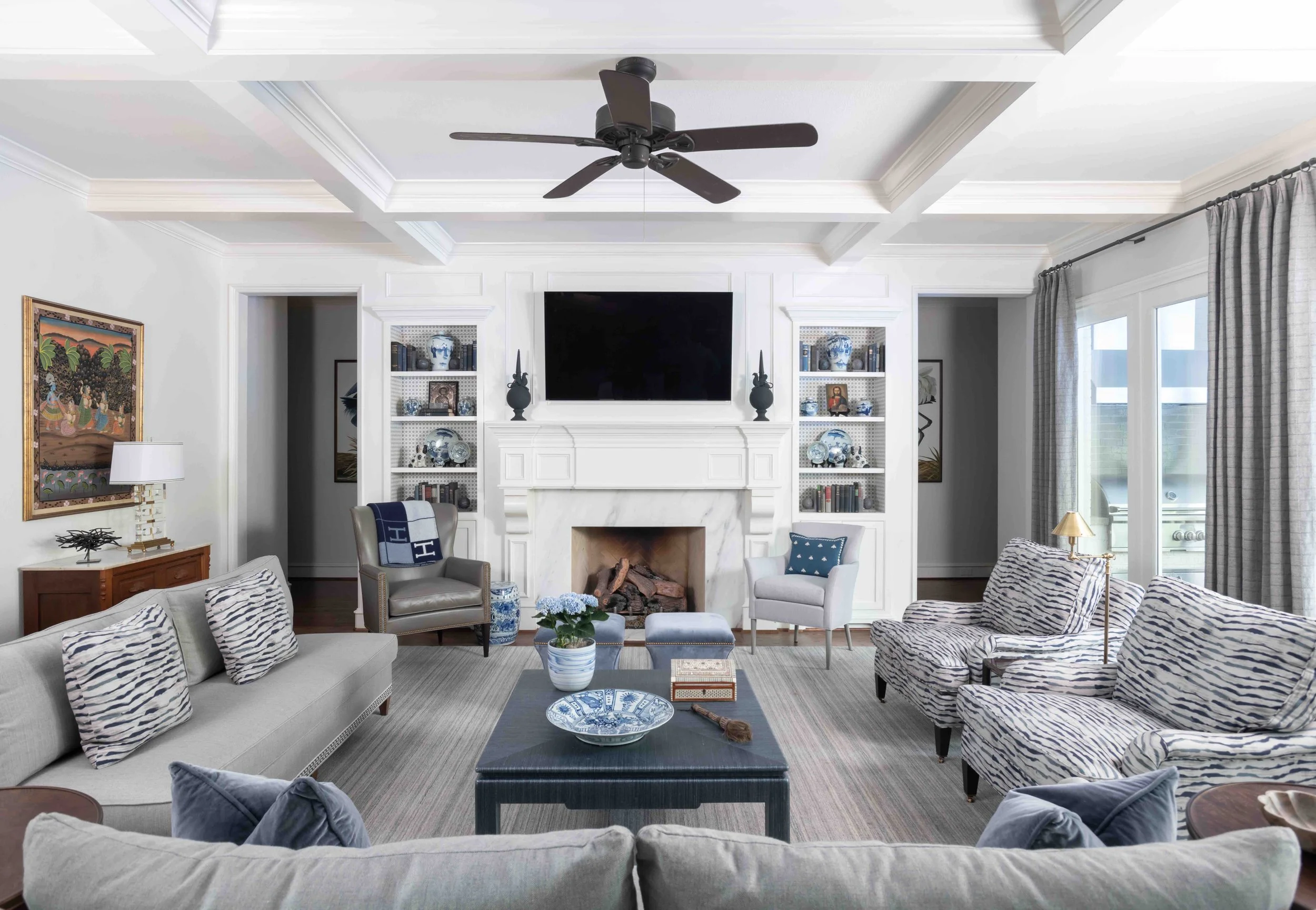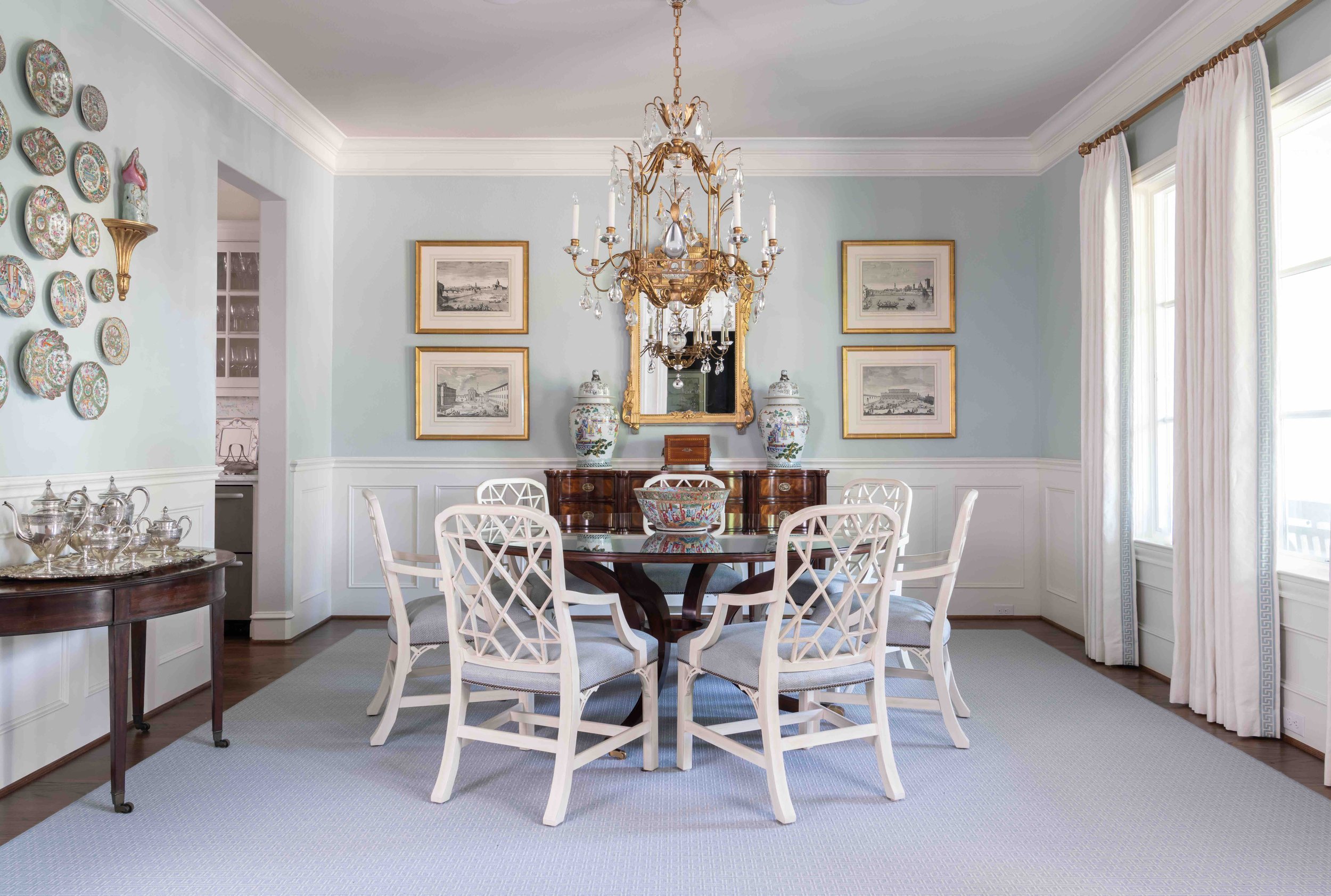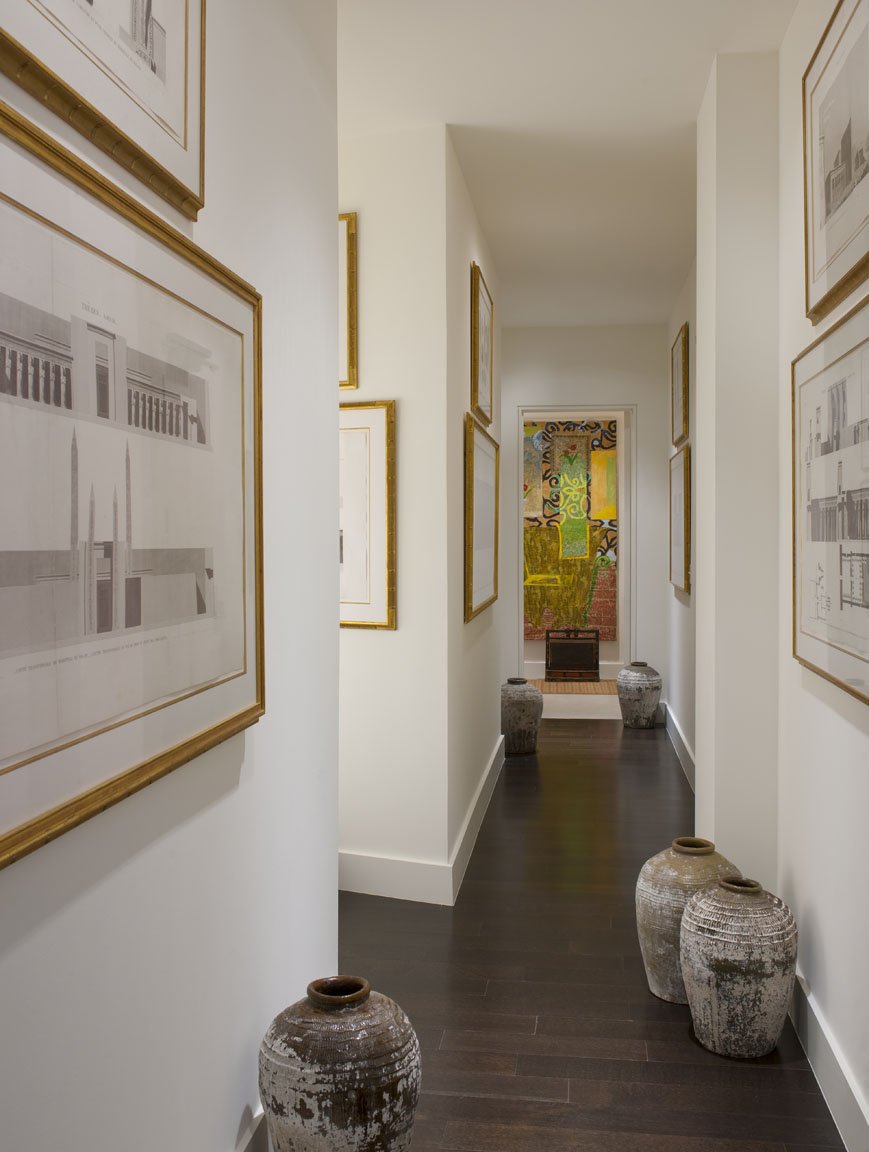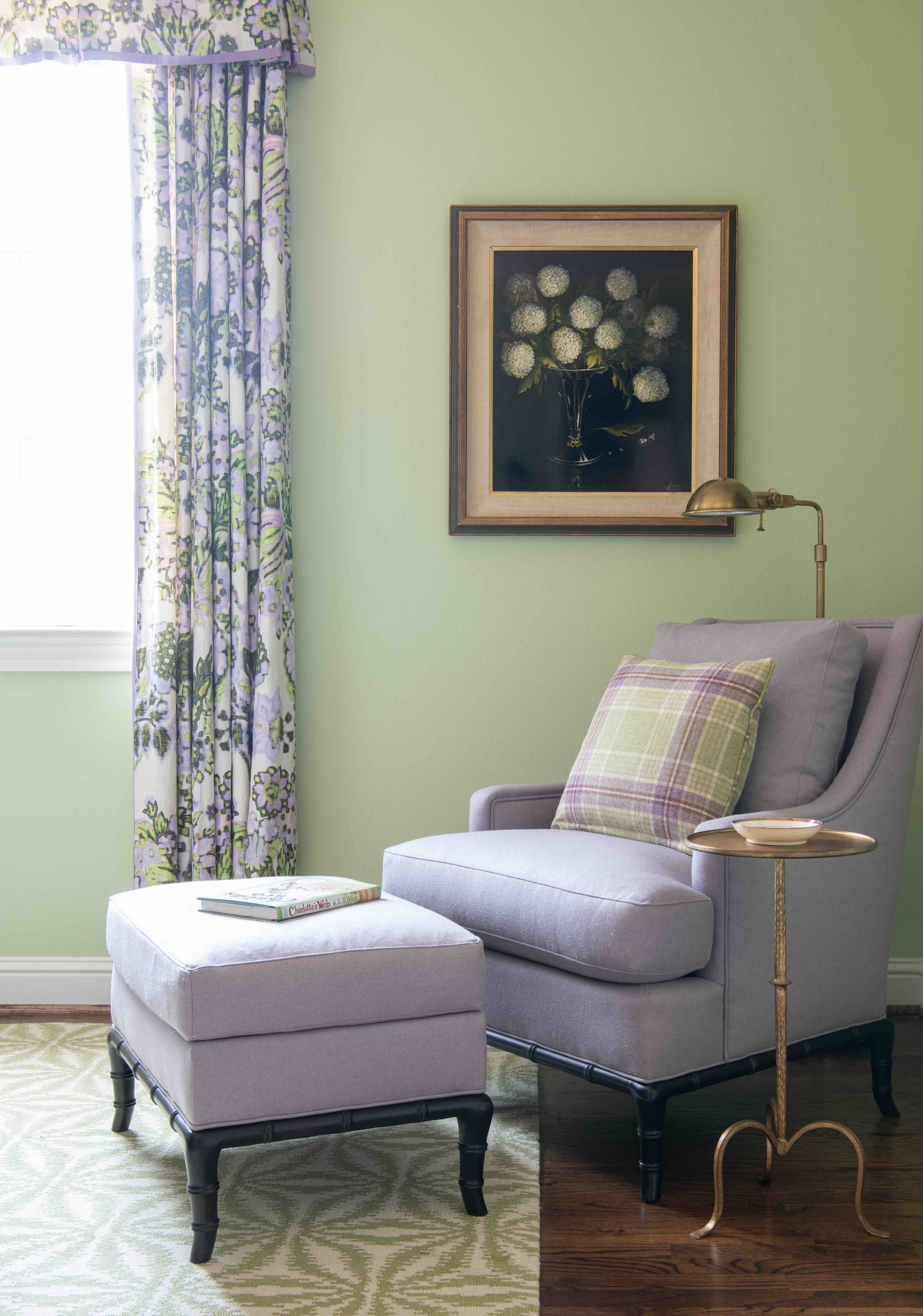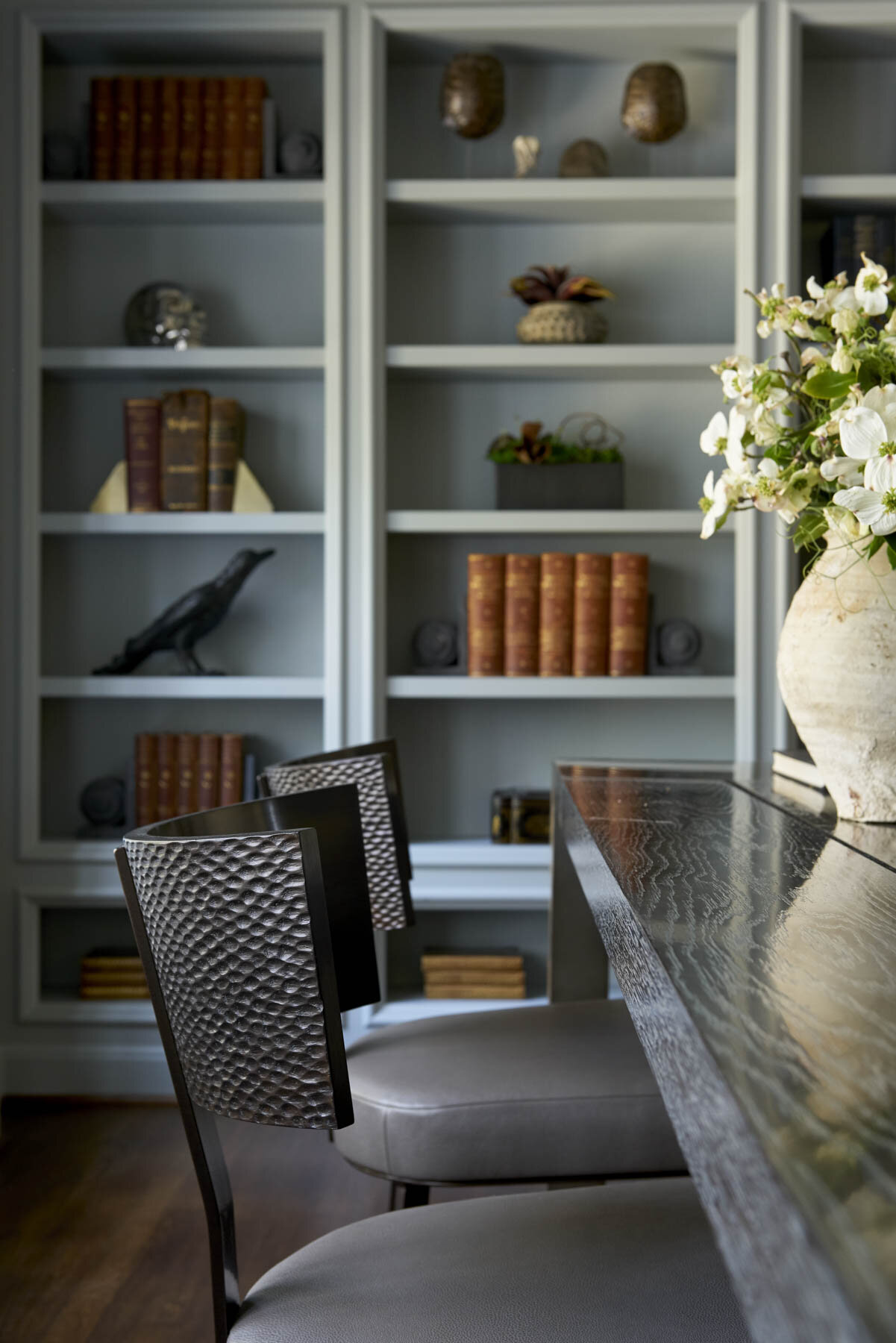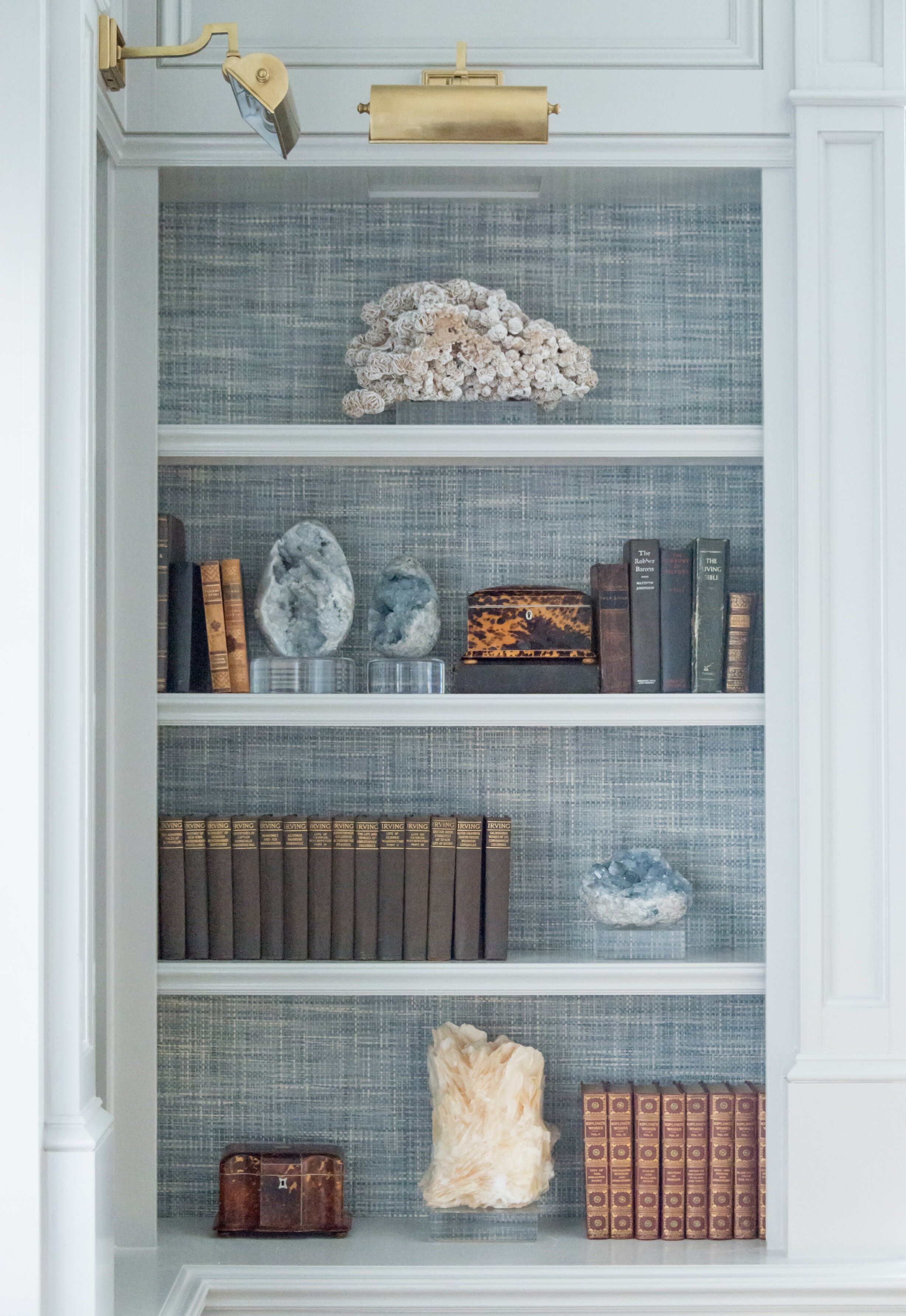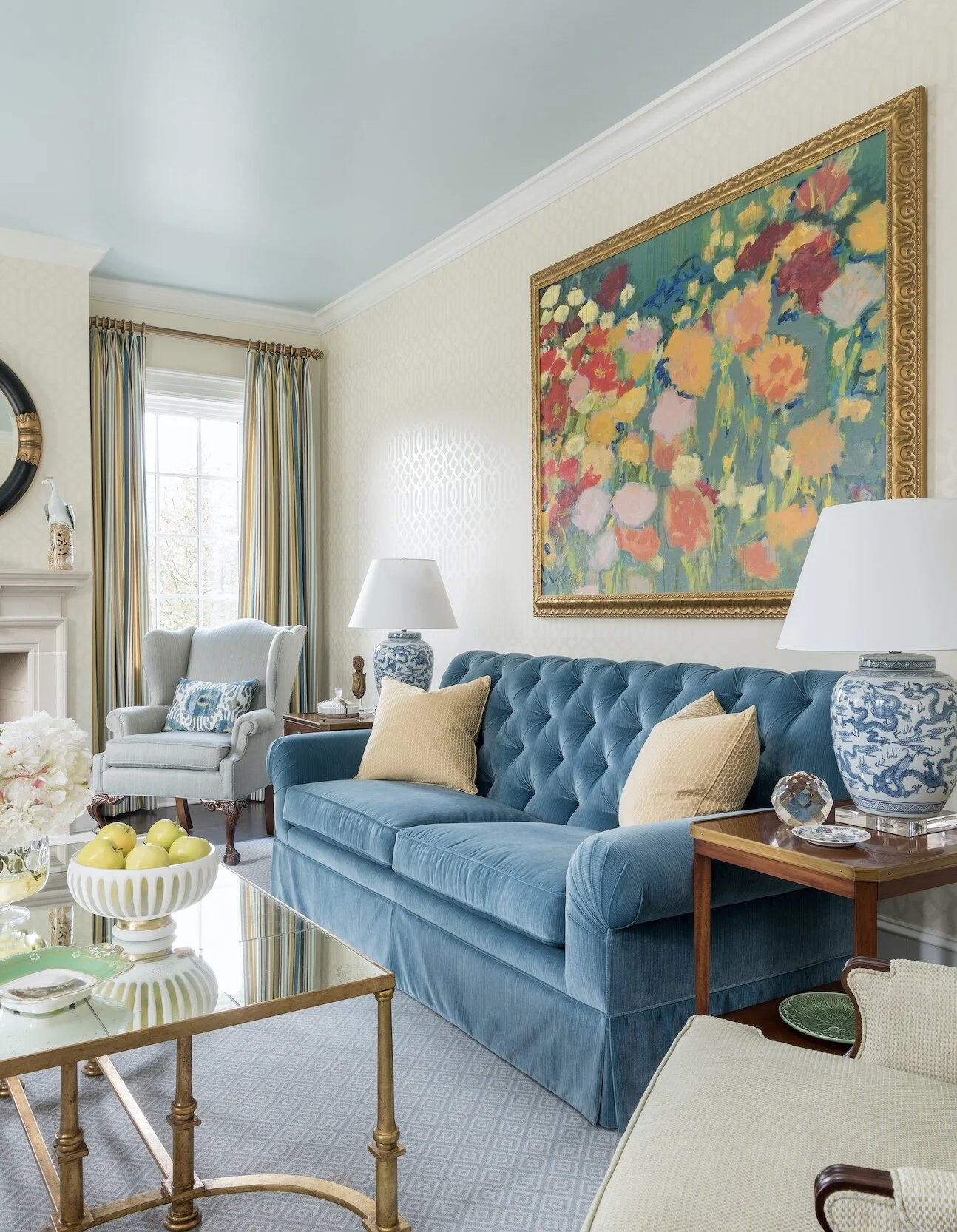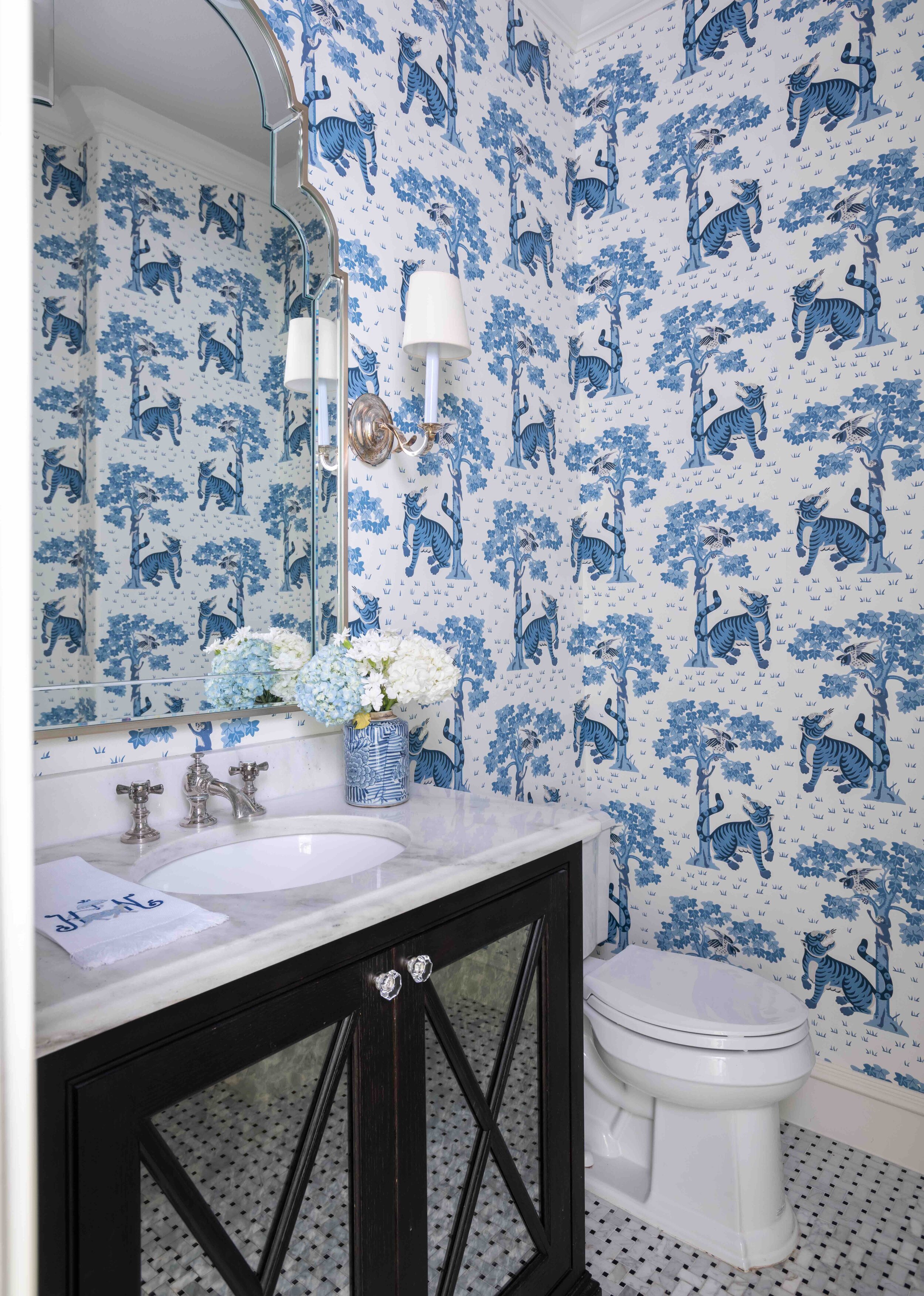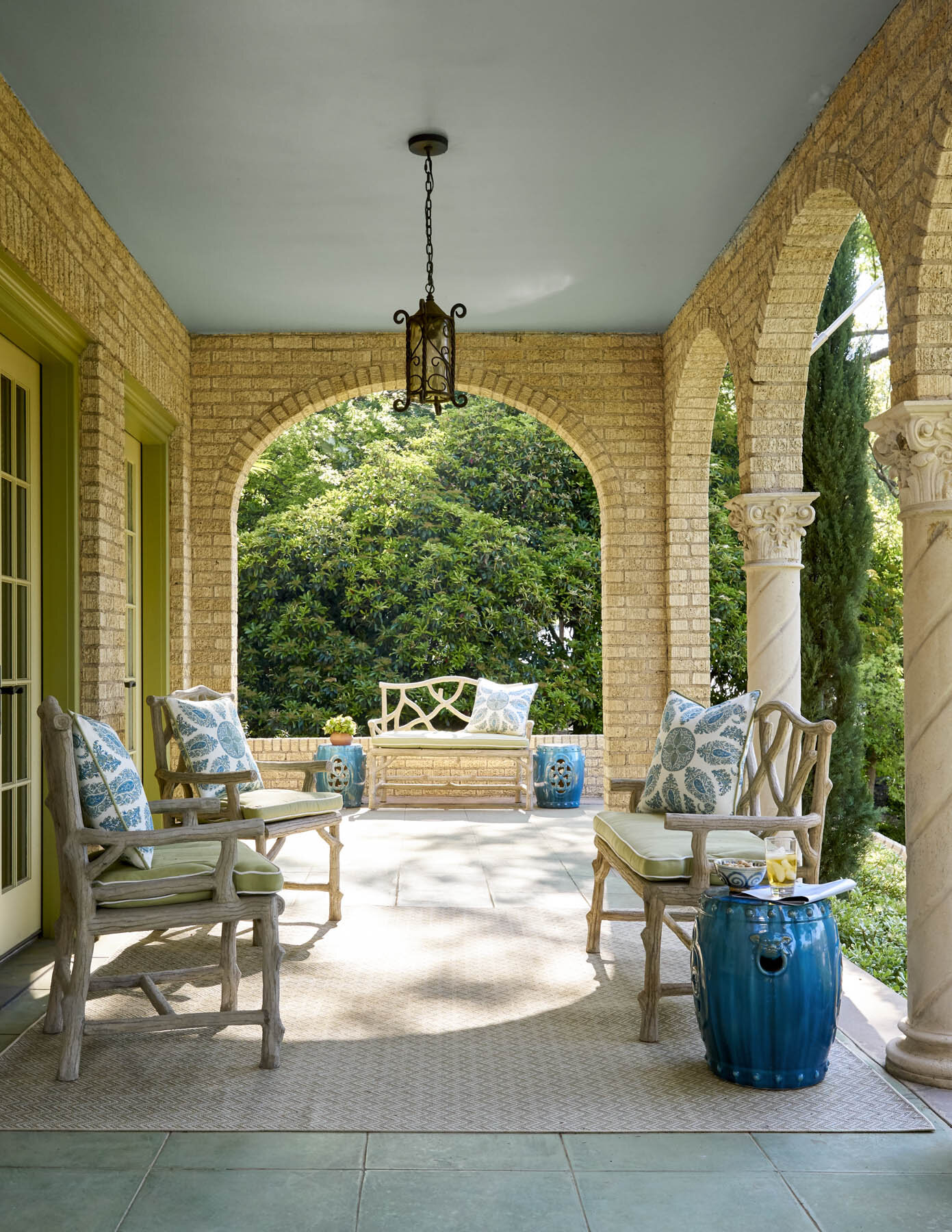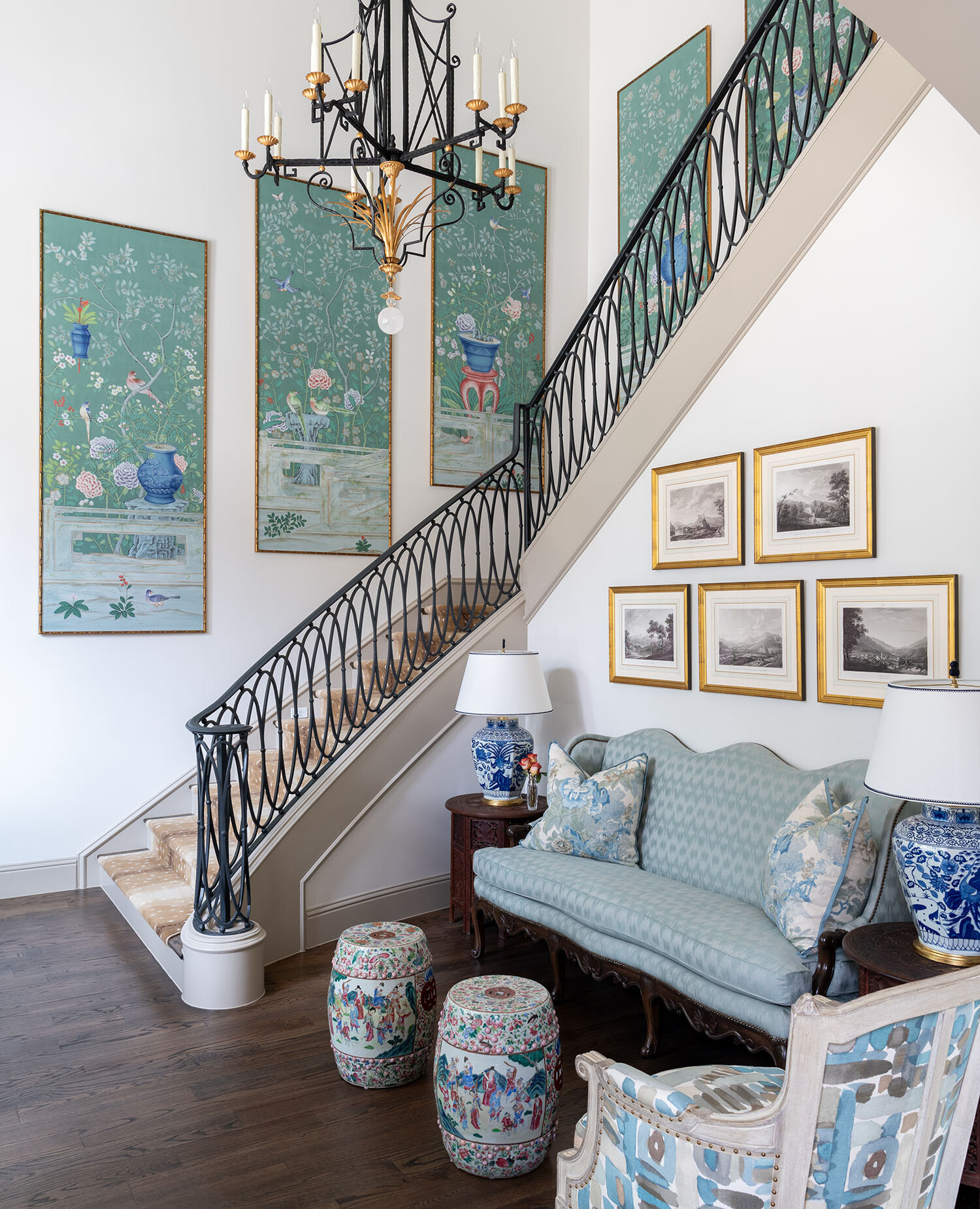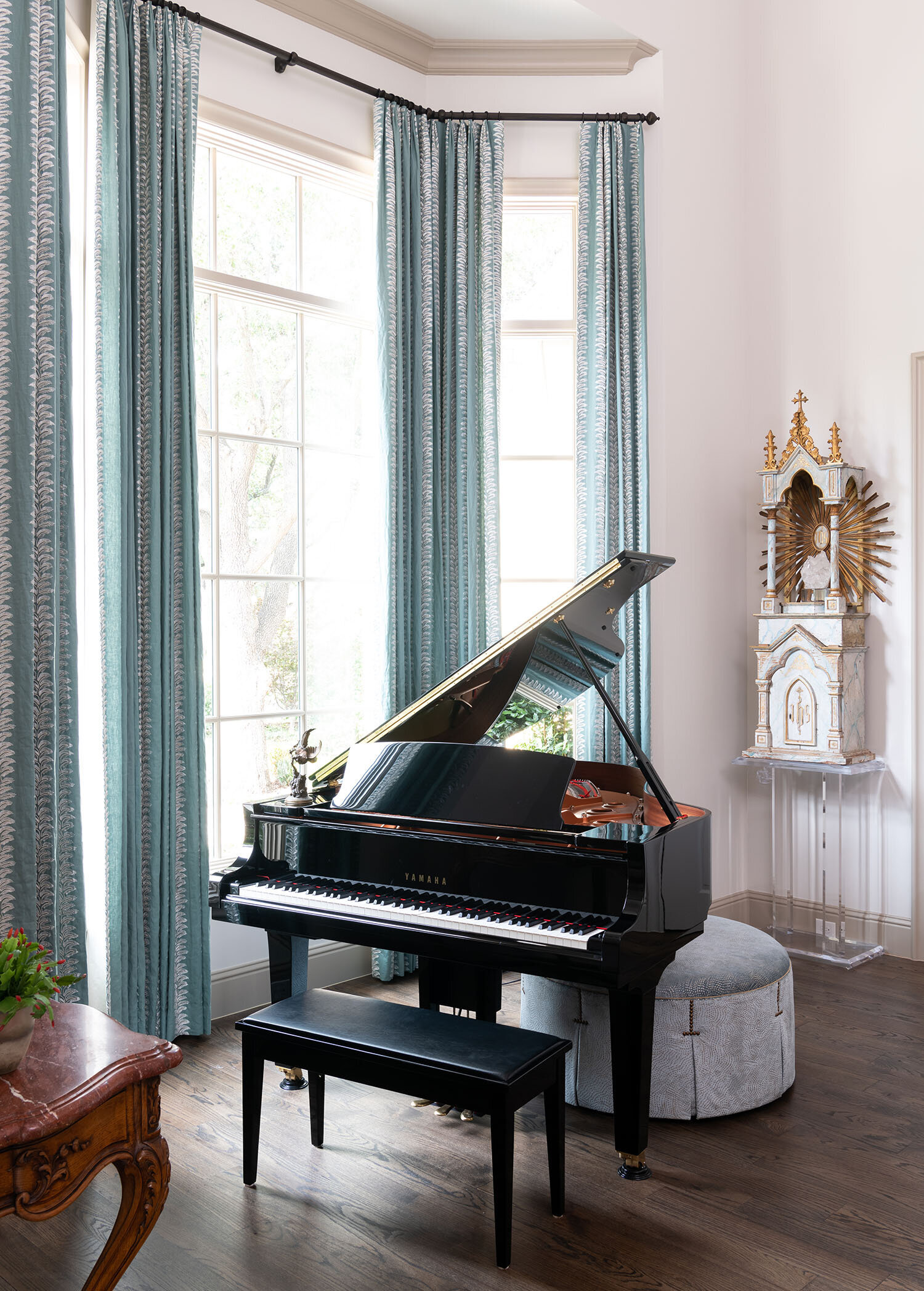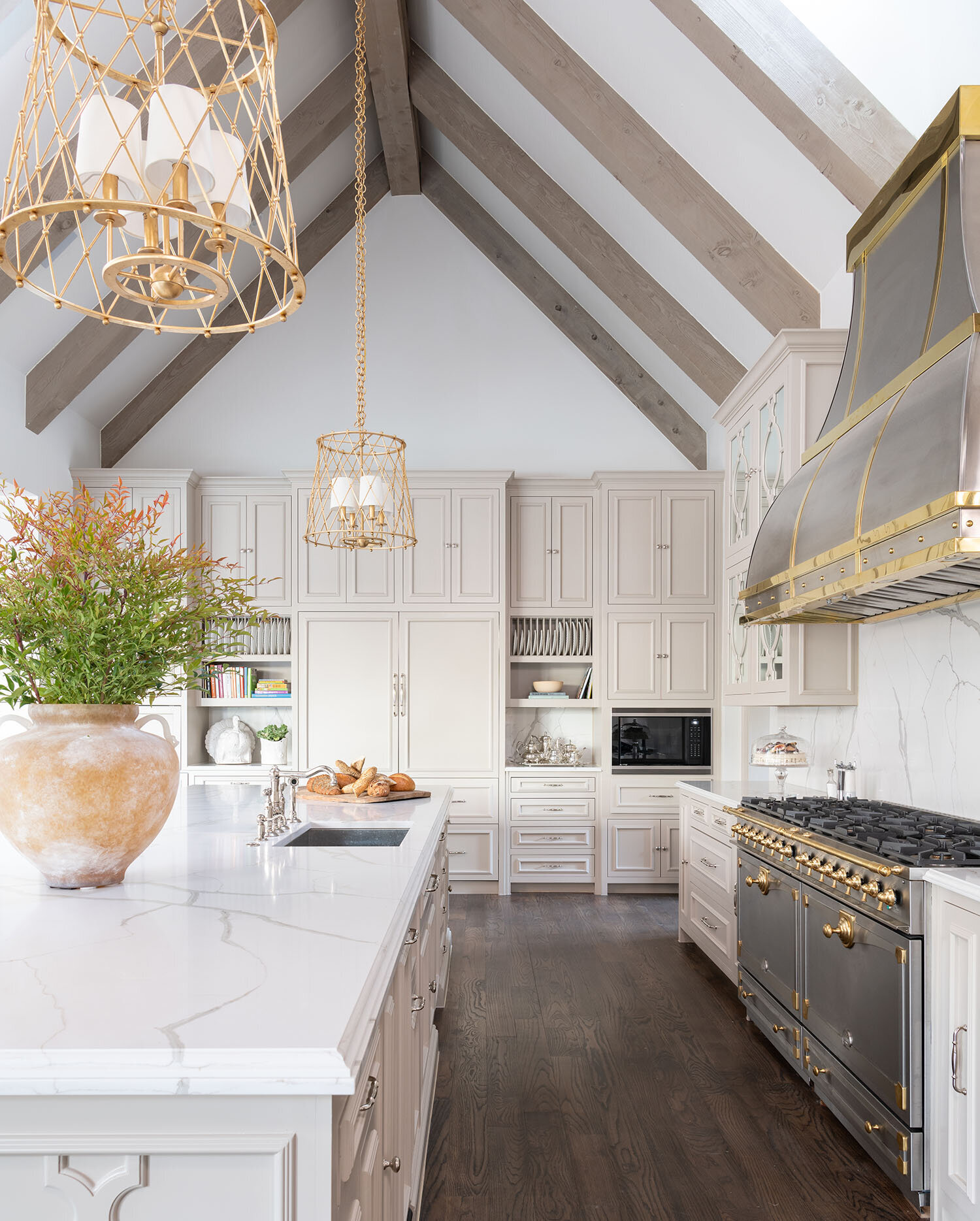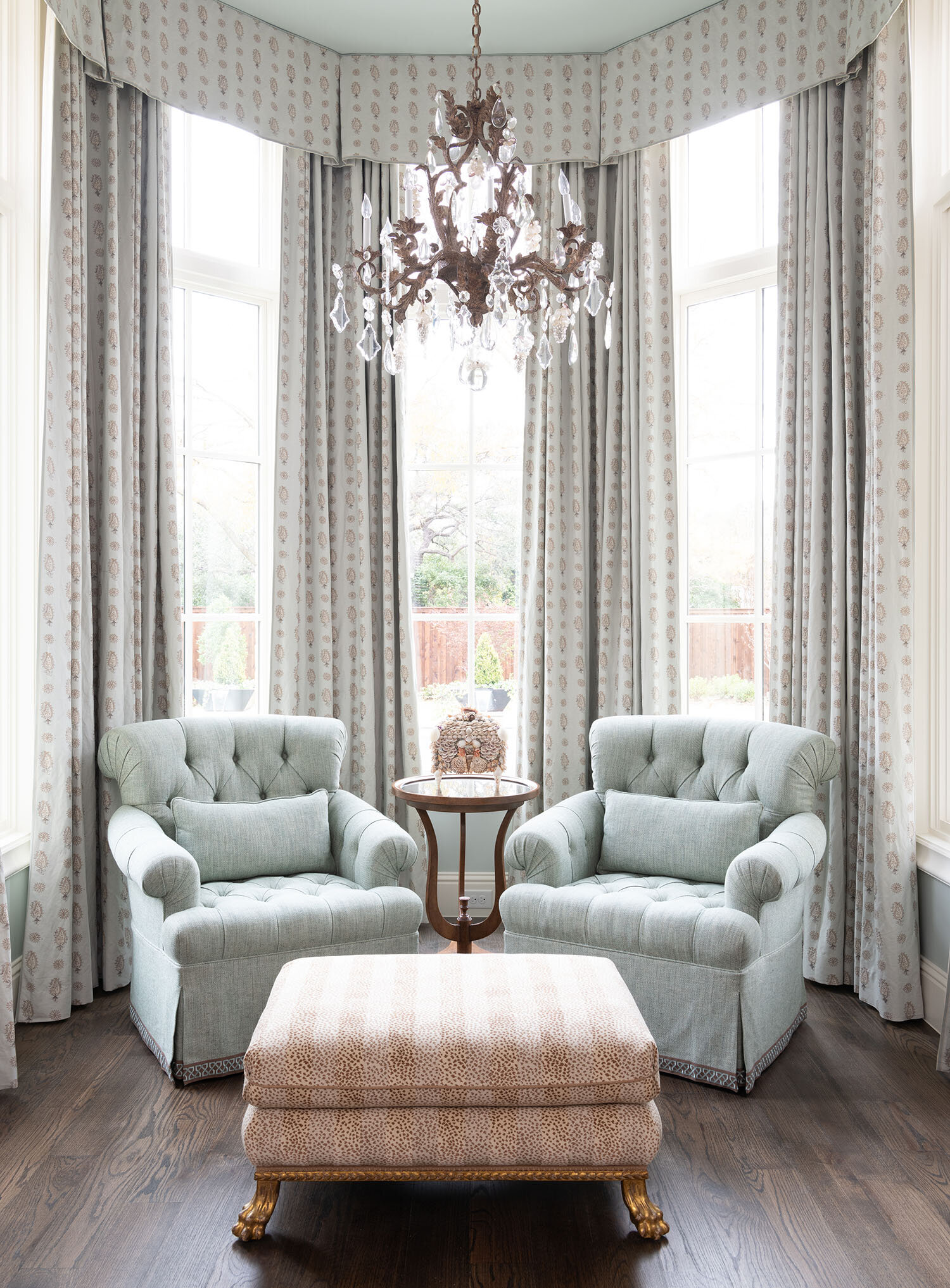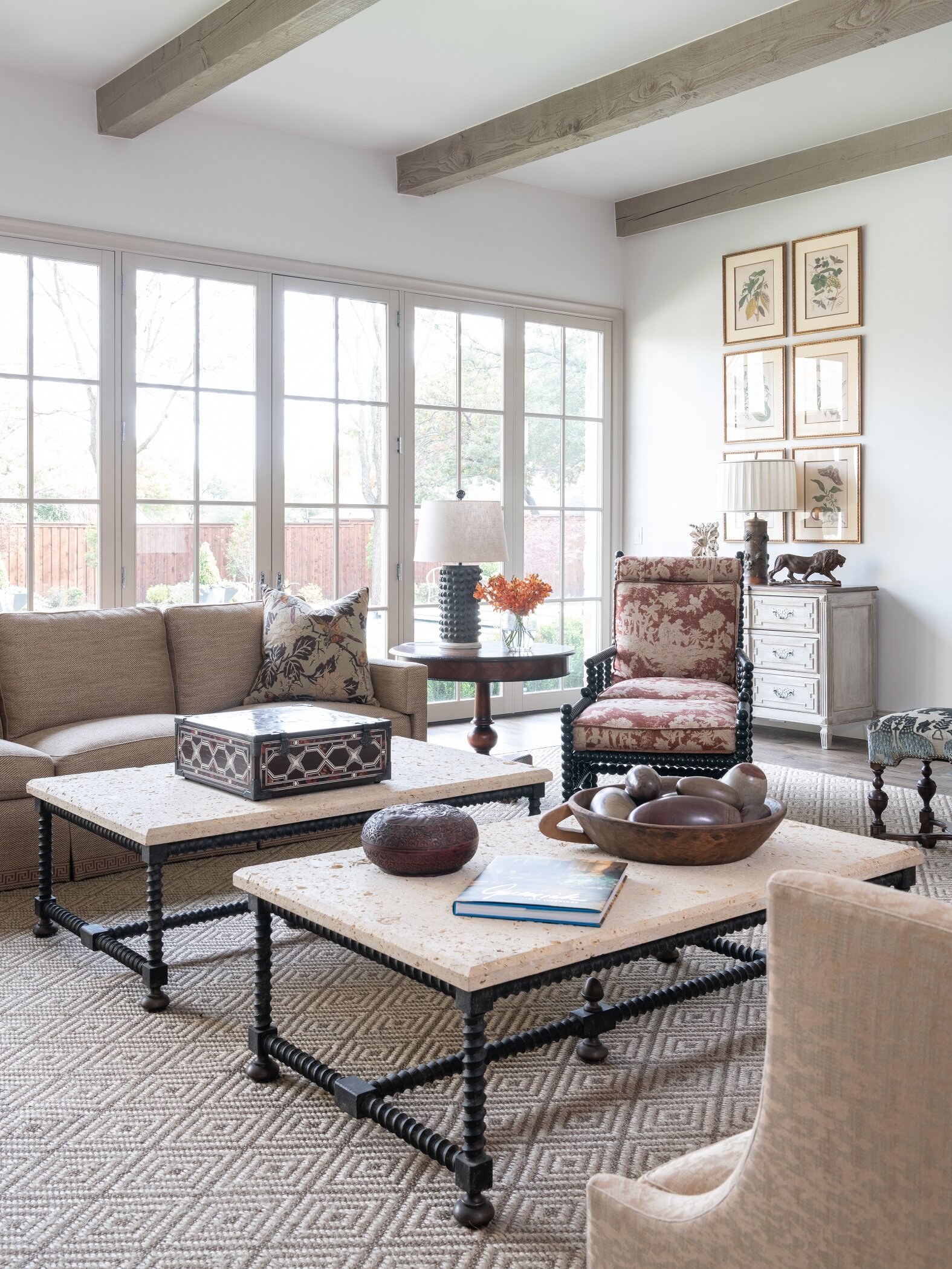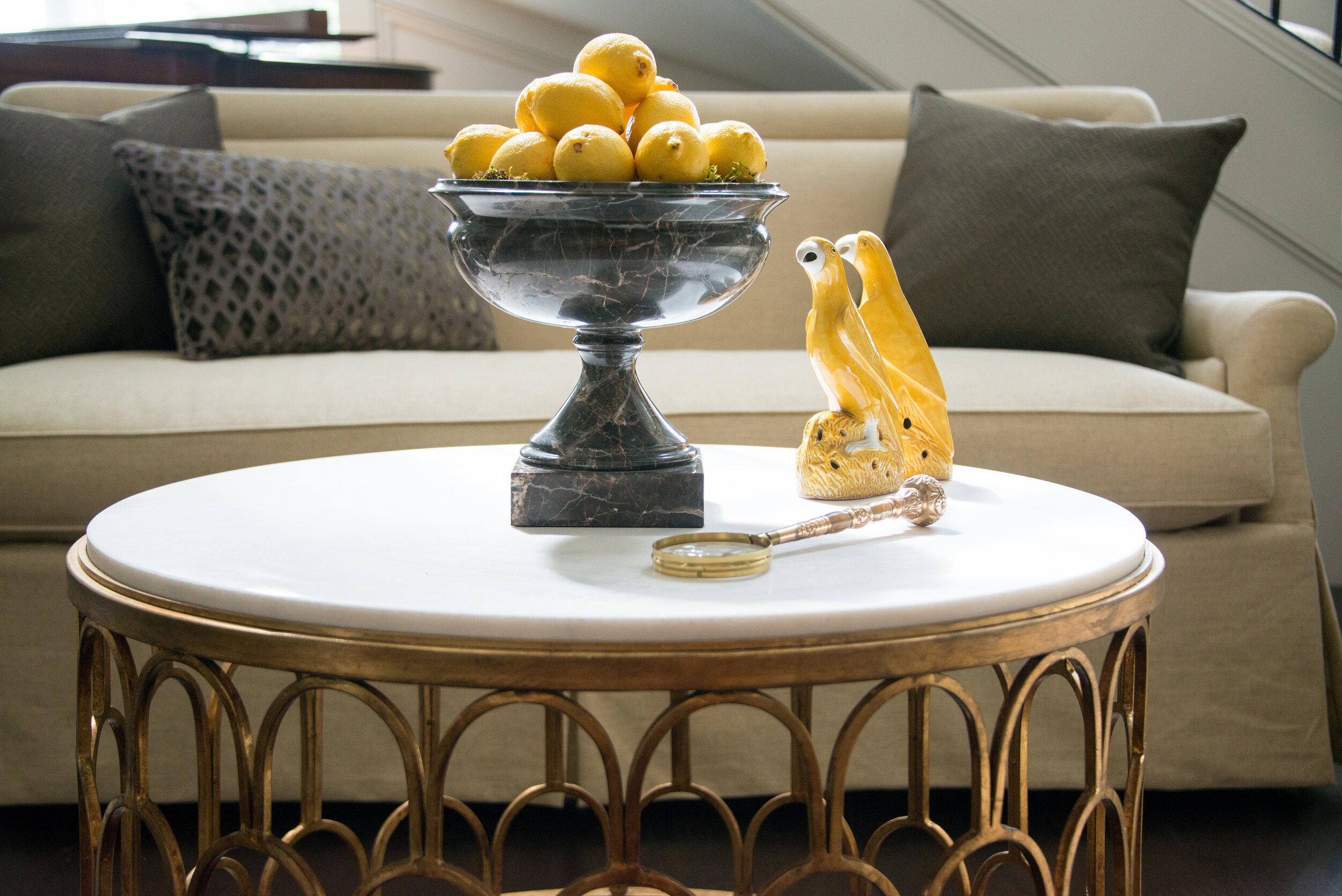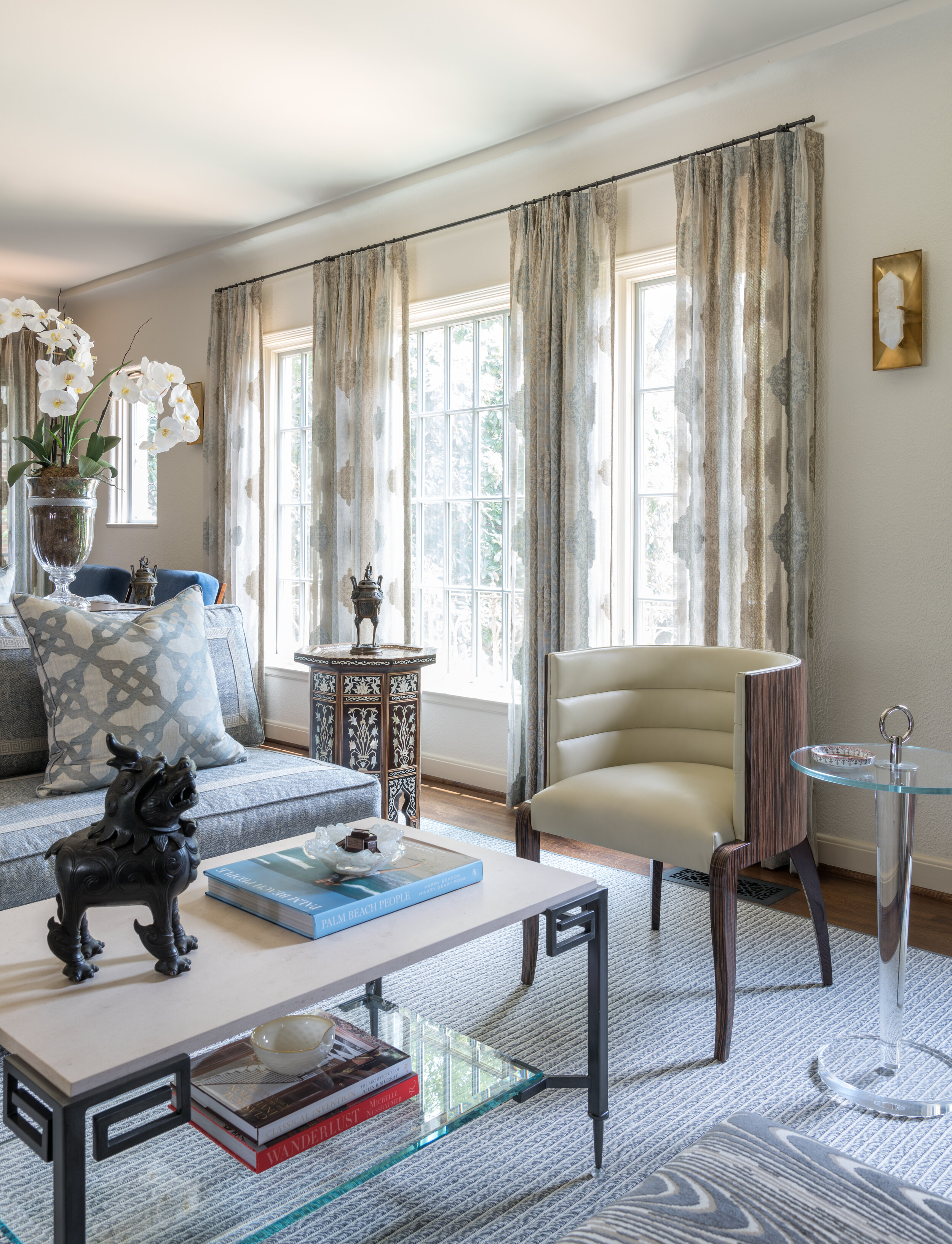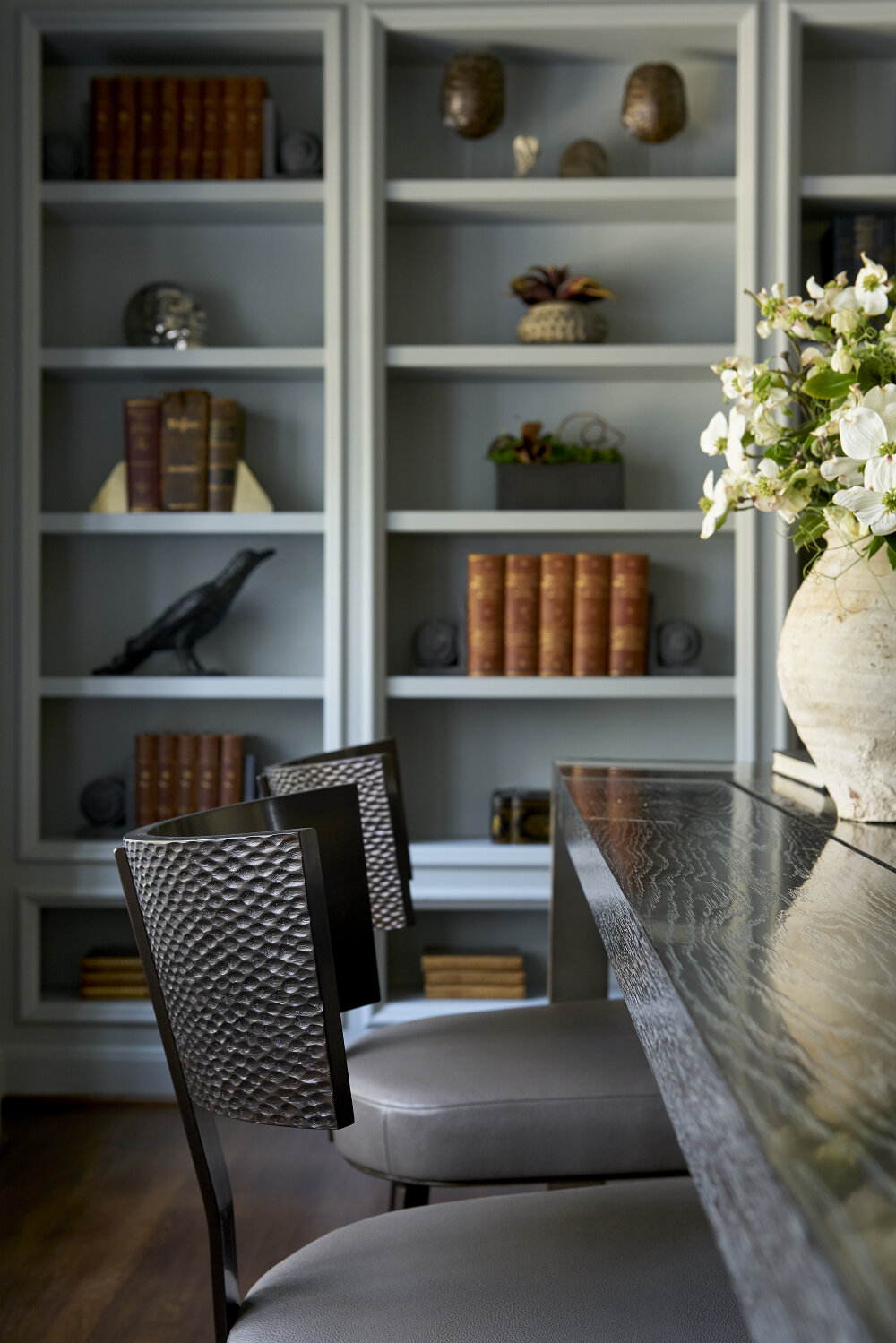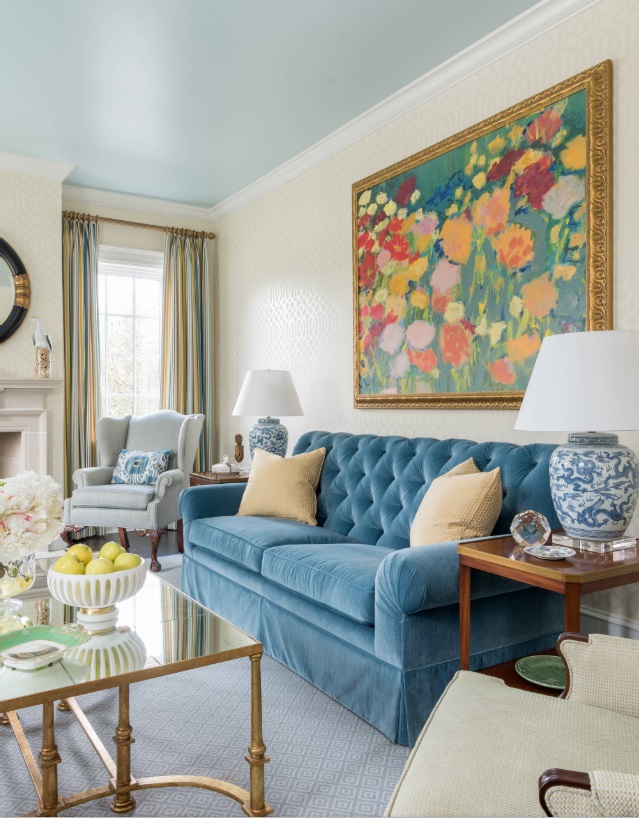Upholstered headboards, like this one with an Indian flair, are super popular right now. It’s always nice to have large night chests next to your bed for reading material and other personal items.
Buying a mattress can feel like a high-stakes decision. Not only are mattresses expensive, but the one you choose has a direct impact on your health. According to a 2019 study by OnePoll for Slumber Cloud (a bedding company), the average American spends a total of 36 years lying in bed over their lifetime. Working as a Dallas interior designer, I’ve learned a lot about mattresses and bedding over the years. Below, you’ll find my personal tips for finding a mattress that fits both your body and your bedroom perfectly.
There are a lot of mattress options on the market, which can make shopping for one even more intimidating. Learning about the pros and cons of each kind can help you narrow down your options. Just keep in mind that most people require a bed that is medium-firm or firm to keep their spine in proper alignment.
Step 1: Choose Your Mattress Type
Memory foam:
Memory foam “cradles” your body, taking some of the pressure off your shoulders and hips. It also helps to absorb the movements of a sleeping partner. The main drawback of memory foam is that it traps heat, but some companies sell mattresses with cooling features to offset this.
Latex:
Latex mattresses are firmer and more expensive than memory foam mattresses. Since natural latex comes from rubber trees, it is more eco-friendly than synthetic materials like foam.
Innerspring:
Air circulates between the coils of an innerspring mattress, creating a cooler night’s sleep. They are also more affordable and durable than memory foam. However, they have less cushioning. For more comfort, you can always buy an innerspring mattress with a pillow-top, which adds a layer of soft material in the cover. I personally prefer an innerspring mattress with a built-in pillow-top.
My client for this Dallas project likes to put a featherbed on top of her mattress. It’s a topper that goes underneath the sheet, keeping the bed warm and toasty in winter. A featherbed also gives a really fluffy look to the bed, making you want to just run and jump in it.
Hybrid:
Hybrid mattresses, which combine either memory foam or latex with coils, are a very popular option. They have both the support of coils and the softness of foam. However, they tend to be more expensive and difficult to put together.
By the way, if you can wait to buy a new mattress, you should absolutely take advantage of sales. Holiday weekends, such as Presidents Day, Memorial Day, Fourth of July, Labor Day, or Black Friday are the best times to buy.
Adjustable:
Adjustable mattresses allow you to raise the head or foot of the bed, which can be helpful for people who snore or have lower back pain.
The bed in this Africa-inspired guest bedroom has a unique bed frame with rush covering the headboard and footboard. This is from a home we designed in Kessler Park.
Step 2: Shop for the Appropriate Size
In addition to your mattress material, you’ll need to choose the right size for your room.
• Twin: For small bedrooms, bunk beds, children, or teens.
• Twin XL: For tall teenagers or adults with small bedrooms.
• Full: For single sleepers or guest bedrooms.
• Queen: For single sleepers who want more space, couples, or guest bedrooms.
• King: For couples who want more space or have children/pets that sleep with them.
• California King: For taller couples who want plenty of space.
Note that King and California King beds are more difficult to move and can dominate small spaces.
Step 3: Look into Box Springs
Box springs are intended for innerspring mattresses. They provide additional height and airflow from the bottom, as well as shock absorption and support, which help to extend the life of your mattress.
Latex and foam mattresses are not compatible with box springs and should be placed on foundations instead. Foundations have wooden slats instead of coils, which help to support the extra weight of latex and memory foam beds. A platform bed has its own built-in bed frame, so it doesn’t require a bed base.
The shortest type of box spring, sometimes referred to as a “bunkie board,” is about 2 inches tall. The next size up is called “low profile” and is typically 4.5 to 5.5 inches tall. These lower heights can be a good option if your mattress is already tall. A standard box spring is somewhere between 8.5 and 9 inches high. All box springs help to protect and support your mattress, regardless of their height.
Step 4: Find the Right Height
There is a real art to picking a mattress that is proportional to the bed, the nightstand, and the rest of the room. Mattresses have gotten so thick that they overpower a room or dwarf the headboard sometimes. Tall beds can be dangerous to fall out of too, especially for an older person.
In my opinion, the perfect bed height is 27 inches—high enough to be beautiful, but not high enough to be dangerous. I’d recommend pairing a 14-inch dust ruffle with a 13-inch-tall mattress to make a total of 27 inches. Your night chest should ideally be a few inches above the top of the mattress, box spring, and frame.
Notice how the night chests are taller than the bed in this Preston Hollow bedroom.
Step 6: Get the Most Out of Your Mattress
You may have heard that you need to change your mattress and box spring every seven years. In my experience, a quality mattress and box spring can last much longer than that if you take good care of them. Of course, if you’re having trouble sleeping comfortably or waking up with neck and back pain, it might be time to replace your mattress.
People tend to sleep in the same spot in their bed every night. If you flip the mattress around and turn it upside-down, it keeps even wear on them. My husband and I flip our mattress at least once a year. Also, it’s not a bad idea to replace your mattress cover every few years to remove dust mites. Another option is to get a new mattress topper instead of replacing the whole mattress.
Now, if you want a whole new bedroom—not just a new mattress—then it might be time to speak with an interior designer like myself. Bedrooms are one of my favorite spaces to design because there is so much room for creativity. Whether you go it alone or hire a professional, taking the time to find the perfect bed for your body, budget, and room is always worth the effort. To schedule a consultation with us, call our Dallas office at 214-651-7665 or send an email to info@chambersinteriors.com.











